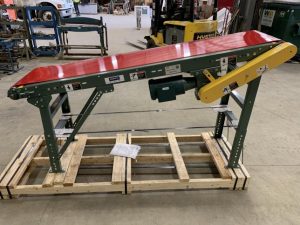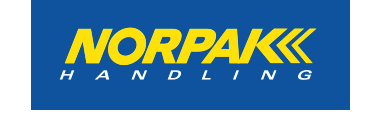 How to select the right conveyor belt, according to Norpak Handling
How to select the right conveyor belt, according to Norpak Handling
February 3, 2020 REDWIRE is news you can use from leading suppliers. Powered by FRASERS.
Posted by Norpak Handling Limited
Norpak Handling provides conveying products and complete turn-key systems to suit your requirements and solve your probl... Read more
Subscribe
Free REDWIRE e-newsletter

Norpak Handling offers expert advice on how to choose the right conveyor belt.
Norpak Handling not only supplies great material-handling products; it also employs experts who find the right solution to every need. This team knows that customers need to select the right conveyor belt for every application. The selection process is challenging, as handled materials have varying characteristics.
Fortunately, the Norpak crew is happy to offer its best tips for conveyor belt selection and all of the factors that go into it.
Traits, conditions, and general operations
Among the things customers should consider when selecting conveyor belts are the traits of the handled products (for example, friction coefficient or ease of stacking), the plant’s atmospheric conditions, and the general operations that the system handles. Does the application involve sorting, gapping, scanning, quality control, or inclines? All of these factors matter, according to Norpak.
It is essential to understand the physical characteristics that distinguish belts from each other. Properties to consider include the belt’s compound or fibre, its strength, minimum usable pulley diameter, and working temperature range. It also helps to dissect the anatomy of the conveyor belt. Covers are made from a variety of materials, from PVC and silicone to Teflon, rubber, or nitrile – each of which resists different kinds of contamination. Each belt also has a carcass with a certain level of strength.
Also useful to consider is whether to get standard or custom belting. One can get a standard belting option for general product-handling purposes, or a customized belt for a specific design of conveyor or a specific application.
Once a design of belt has been chosen, the next step is to consider the conveyor surface running under the belt. Norpak experts can advise on identifying the ideal bed over which to run the belt, which depends on numerous factors. Slider bed capabilities suit most decline conveyors, for example, and are cost-efficient solutions for similar applications and footprint. Roller beds are practical for include conveyors, especially those with minimal horsepower requirements.
With more than three decades of experience from which to draw, Norpak has the protocols, qualified technicians, services, and inventory to guide belt selection.
To learn more, contact Norpak.
Share
Posted by Norpak Handling Limited
Norpak Handling provides conveying products and complete turn-key systems to suit your requirements and solve your probl... Read more
